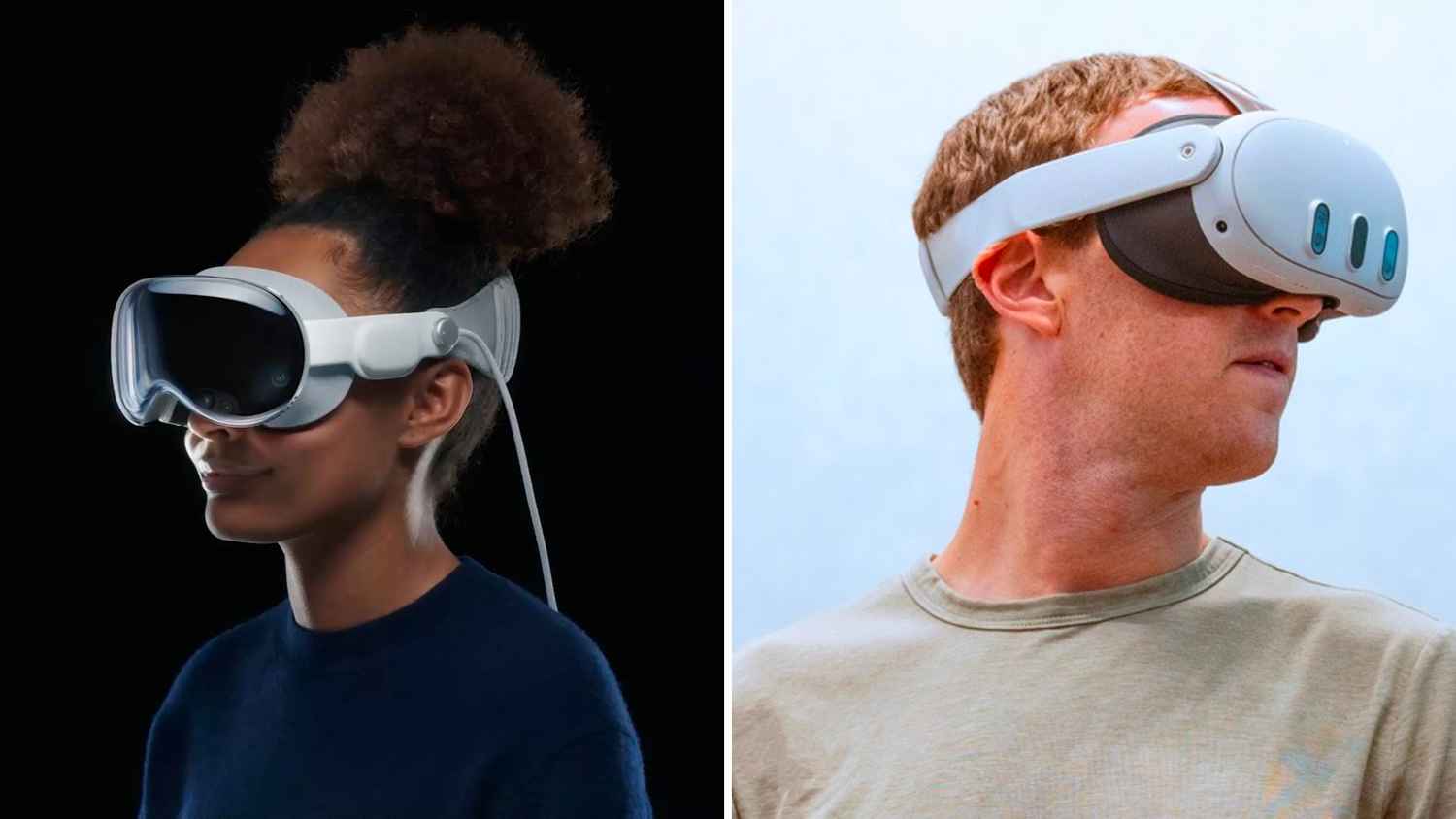Apple Vision Pro is superior to Meta Quest 3 but is that a reason to spend on it?
Apple Vision Pro launched at WWDC 2023.
It is priced at $3,499 while the Meta Quest 3 is priced at $499.
Here's how the Apple Vision Pro compares to the Meta Quest 3.

Apple Vision Pro AR/VR headset has launched as the breakthrough product in the spatial computing sphere. It carries head-turning specs and an eye-watering price of $3,499. Meanwhile, Meta Quest 3 is a more modest offering at $499. So that price difference aside, here’s a Vision Pro vs Quest 3 comparison to discern which of the two headsets makes more sense for you, at least on paper.
 Survey
Survey1. Use cases and pitch
Vision Pro is a first-gen product that’s packed to the brim with cutting-edge technologies but only a small portion of the presentation was dedicated to gaming. Apple notes more than 100 Apple Arcade Games will be supported by its headset. Meanwhile, Meta boasts Quest 3 will have the world’s best library of immersive experiences on day one. Quest 3 will be compatible with its predecessor’s 500+ titles.
Apple primarily pitches the Vision Pro as a spatial computer centred around productivity and content consumption.
Even the fact that Apple allows Vision Pro controls through fingers, eyes, and voice; not by a controller shows the commitment to gaming.
2. Build
Apple Vision Pro is made of a custom aluminium alloy frame and a “singular piece of three-dimensionally formed and laminated glass”. Some of the components like the light seal and headband have got soft textile finish. Quest 3 is plastic-made.
Both support swappable and size-adjustable headbands.
3. Audiovisuals
The Apple headset sports 1.41-inch micro-OLED panels on both sides with a custom 3-element lens, 23 million pixels, and 4K resolution.
On the other hand, the Quest 3 reportedly has a single LCD panel with 2,064 by 2,208 pixels per eye.
The rumoured brightness on the Quest 3 is also way less than what the Apple Vision Pro’s leaked nits suggest.
On the audio side, the Vision Pro has dual drivers with spatial audio and position-based audio ray tracing. In its press release, Meta also notes some form of the spatial understanding capability of Quest 3, however, we aren’t sure what it means by that.
4. Prescription lenses
If you need to wear prescription glasses while wearing the headset, you will have to resort to a glasses spacer in the box for wearing glasses. You have to remove the facial interface film and attach the spacer and then fit back the film. In the case of the Apple headset, you get Zeiss Optical Inserts instead for visual correction.
5. Performance
Meta has equipped the Quest 3 with a Snapdragon CPU+GPU (presumably Snapdragon XR2 Gen 2 chip). This is a fairly powerful chip but we don’t think it can stand against the M2 SoC inside Apple Vision Pro. Apple has also stowed in a dedicated R1 co-processor for managing the sensors.
The R1 has to manage 12 cameras, five sensors, and six microphones. Whereas the Quest 3 comes with two colour cameras, two monochrome cameras for head and hand tracking, and a depth sensor.
The software on board is Vision OS (and the new app store) on the Vision Pro headset whilst it is Android 13 on the Quest.
Apple claims the Vision Pro headset can last 2 days on its external battery pack that you have to carry around in your pocket or backpack. It is connected via a cable. Let’s see if Meta gives an internal battery when it officially details the specs.
Not before long, we should have more data on both devices and therefore be able to understand how they actually differ.
G. S. Vasan
G.S. Vasan is the chief copy editor at Digit, where he leads coverage of TVs and audio. His work spans reviews, news, features, and maintaining key content pages. Before joining Digit, he worked with publications like Smartprix and 91mobiles, bringing over six years of experience in tech journalism. His articles reflect both his expertise and passion for technology. View Full Profile